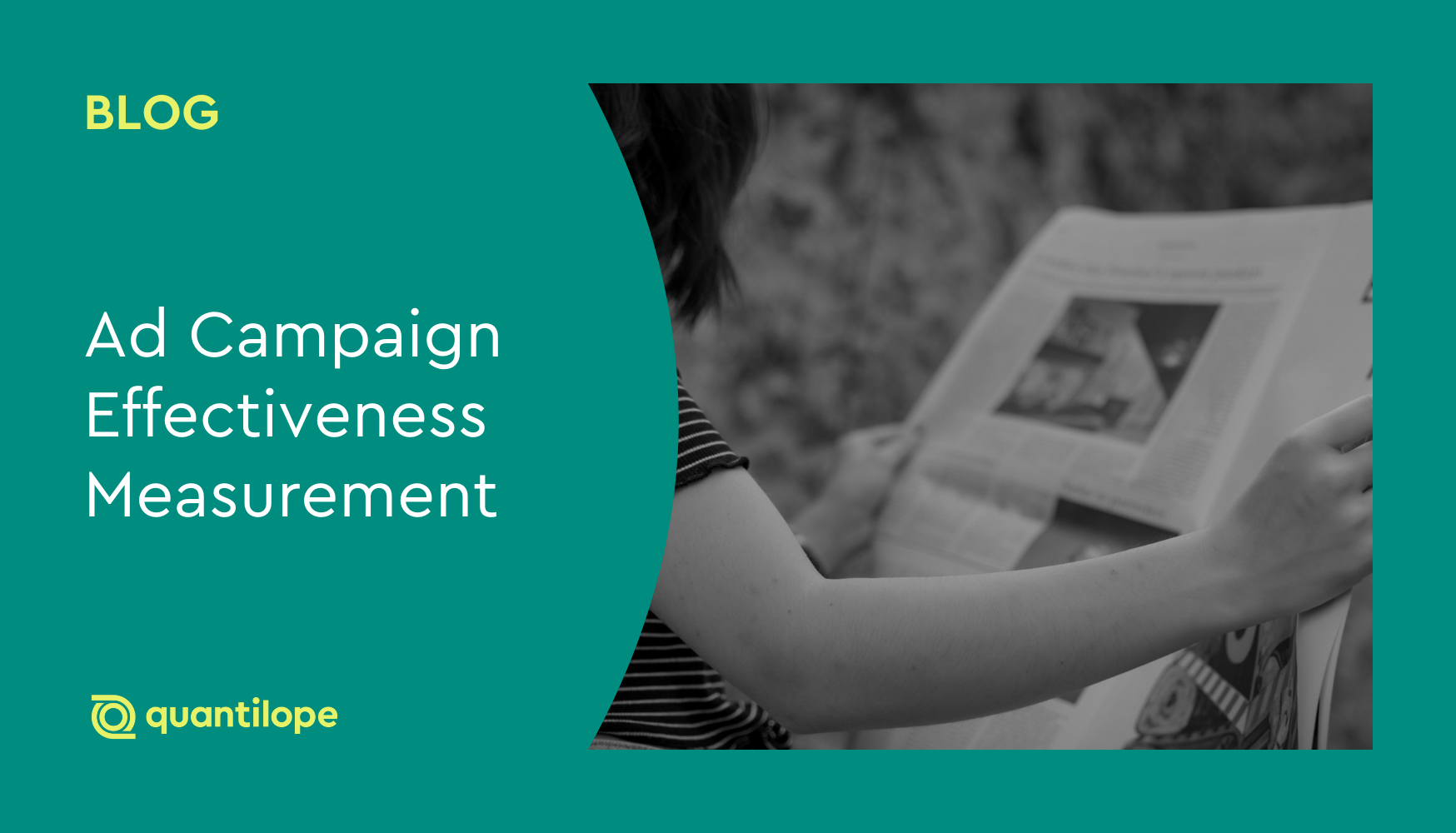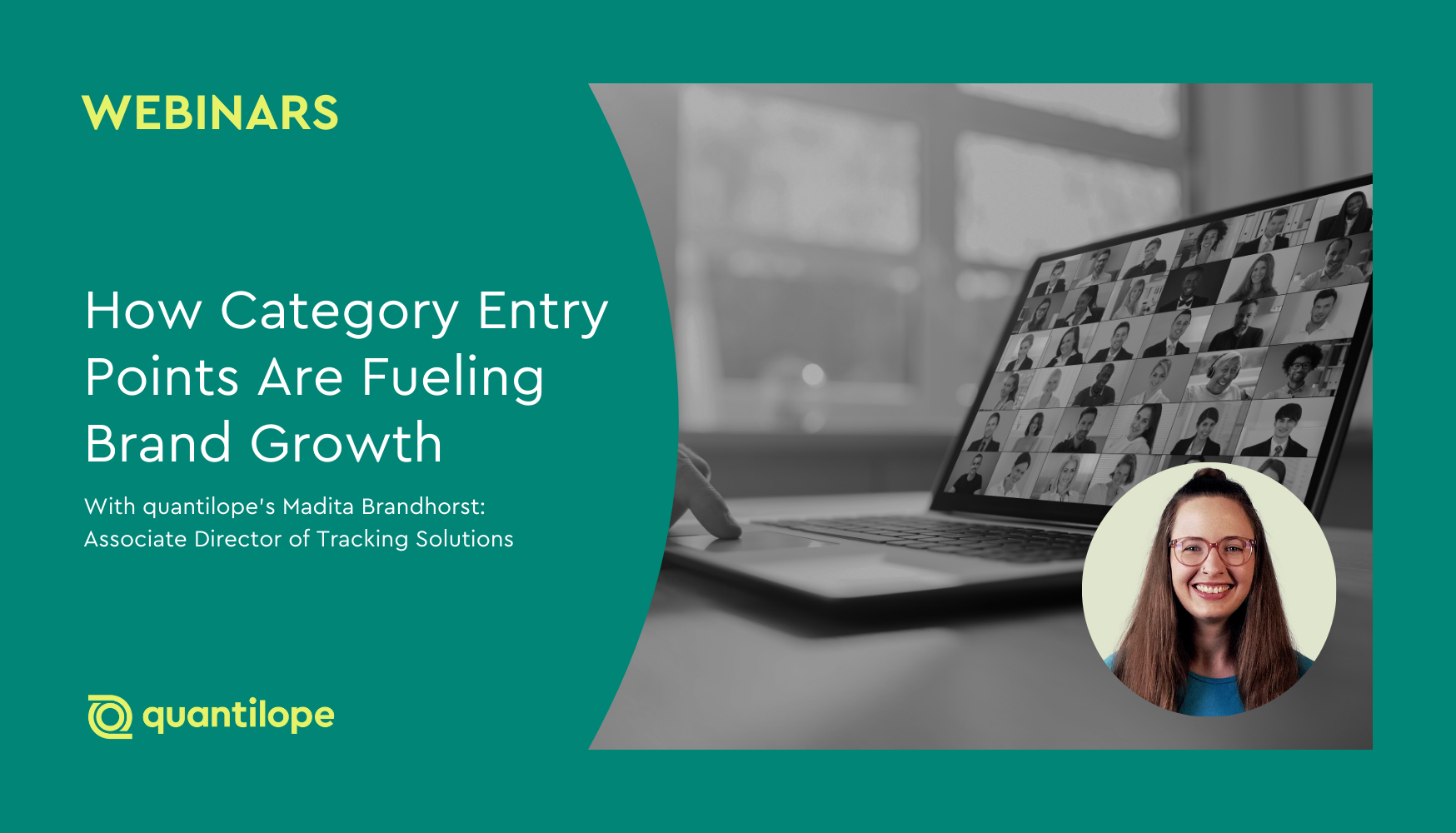Steps to measure ad campaign effectiveness
Knowing what ad campaign effectiveness measurement is and why it’s valuable; below is a step-by-step guide to implementing this type of research and acting on the results.
Set your goals
Before you launch any ad campaign, you should start by defining your campaign goals. Ask yourself and your team what it is you want to achieve with your campaign efforts. Is it to…
- Increase brand awareness?
- Drive website traffic?
- Generate leads?
- Boost sales?
- Improve brand perception?
The key to goal setting is to ensure your goals are ‘SMART’ goals: Specific, Measurable, Achievable, Relevant, and Time-bound. SMART goals help you stay on track and effectively monitor progress. For example, you might expand upon the above goals to say…
- Increase brand awareness by 15% among our target audience (women aged 25-40 in the US) within the next quarter
- Drive website traffic from 18k visitors to 20k visitors per month by the end of the year
- Generate 500 qualified leads by the end of Q3
- Achieve a 10% boost in sales as a direct result of our holiday ad campaign running from November 1st through December 31st
- Improve brand perception by attaining a 2-point lift in Net Promoter Score (NPS) within the next 6 months
Establish a campaign timeframe
Next, determine how long your advertising campaign will be live by setting clear start and end dates. This will help you track campaign performance within a defined period and make accurate assessments against your SMART goals. The duration of an ad campaign depends on a brand’s objectives and budget, and could run anywhere from a month, to a quarter, to a year - or longer!
Choose a measurement tool
Choosing the right measurement tool is crucial for accurately assessing the effectiveness of your ad campaign. This decision will significantly impact the depth of insights you gather, the speed of analysis, and ultimately, the success of your ad campaign measurement efforts.
Traditionally, brands have relied on market research agencies to conduct ad campaign measurement studies. This approach often involves lengthy questionnaires, manual data processing, and weeks or even months of waiting for the results. While agencies can provide valuable expertise, this approach to campaign measurement (and market research in general) can be time-consuming, expensive, and lack agility.
As an alternative to traditional agencies, brands can leverage automated ad tracking platforms. These platforms offer a range of modernized advantages, including:
- Speed and efficiency: Automated processes and pre-built templates significantly accelerate data collection and analysis for faster insights.
- Advanced analytics: Sophisticated analytical tools and dashboards provide deep (often interactive) insights into campaign performance that update in real-time without the need for a separate data processing team.
- Cost-effectiveness: As mentioned directly above, automation reduces the need for manual labor from various external teams, making automated insights platforms often more cost-effective than traditional agencies.
- Agility and flexibility: Real-time data and automated methodologies allow teams to be agile, flexible, and responsive in making adjustments to ad campaigns.
By opting for an automated research platform, brands can gain a competitive edge by quickly gathering rich insights, optimizing ad campaigns in real-time, and maximizing their advertising ROI.
Track performance
With your chosen measurement tool, it's time to set up your study to capture the metrics that matter most to your objectives. This involves careful consideration of which data points will reflect the impact of your ads - and how those data points will align with your SMART goals.
For instance, if your research goal is to increase brand awareness, you'll want to track metrics in your ad effectiveness study around:
- Brand recall: how effectively your ads help consumers remember your brand
- Social media mentions: brand-related conversations and sentiment on social media platforms
- Reach and impressions: the number of people exposed to your ads
In tracking these and other relevant ad metrics (more on these in the next section), you'll gain a comprehensive understanding of how your ad campaign is performing over time. This data will empower you to make informed decisions, optimize your campaigns for better results, and achieve your advertising SMART goals.
Report on findings
Once you've tracked your ad campaign effectiveness metrics, it's time to analyze the data and report on your findings. This is where you'll transform raw data into actionable insights that can drive optimization and improvement.
- Compile and organize: Gather all the data from your chosen measurement tool and organize it in a clear and concise manner. Within an automated research platform, this step is typically just a matter of a click of a button.
- Analyze and interpret: When analyzing your ad campaign data, you’ll want to do more than simply look at the numbers. Dive deep into your data to identify patterns, correlations, and anomalies around your ads that reveal insights into audience behavior and campaign performance. Struggling to deduce findings? Many research platforms have AI co-pilots that can help extract insights from each of your charts (like quantilope’s AI co-pilot, quinn!).
- Draw conclusions: Based on your analysis, draw meaningful conclusions about the effectiveness of your ad campaign. Did it achieve its objectives? What were the key drivers of success or failure? What areas need improvement for future iterations of the ad?
- Make recommendations: Translate your conclusions into actionable recommendations for optimization. This might involve adjusting targeting parameters, refining ad creatives, or revising your ad bidding strategy.
- Create a report: Present your findings in a report or dashboard that clearly communicates key insights and recommendations to stakeholders. This report should be visually engaging and easy to understand.
Below are some key elements to include in your ad campaign effectiveness report:
- Executive summary: Include a concise overview of the campaign's performance and key findings before diving into the finer details.
- Objectives and methodology: Clearly state the campaign goals and the methods used for measurement (e.g. A/B testing, Segmentation, etc.)
- Key Performance Indicators (KPIs): Present the most important metrics and their trends over time (if tracking).
Back to Table of Contents
Top metrics to track for ad campaign measurement
Above we talked about each of the steps involved in measuring the effectiveness of an ad campaign. One key step was to track the performance of your metrics - but what metrics should you track? Below we’ll dive into some commonly measured ad campaign metrics that help brands gauge their campaign success:
Impressions
- What it means: The number of times your ad is displayed, regardless of whether it was clicked or not.
- Metric’s impact: Impressions give you a sense of your ad's reach and visibility. A high number of impressions indicates that your ad is being seen by a large audience.
Cost per thousand impressions (CPM)
- What it means: The cost you pay for every 1,000 ad impressions (CPM comes from the term cost per mille).
- Metric’s impact: CPM helps you assess the cost-efficiency of your ad campaign. A lower CPM means you're getting more impressions for your budget.
Click-through rate (CTR)
- What it means: The percentage of people who click on your ad after seeing it.
- Metric’s impact: CTR measures the effectiveness of your ad in capturing attention and driving traffic to your landing page. A higher click-through rate indicates a more engaging ad.
Cost per click (CPC)
- What it means: The cost per click you pay each time someone clicks on your ad.
- Metric’s impact: CPC helps you evaluate the cost-efficiency of driving traffic to your website. A lower cost per click means you're getting more clicks for your budget.
Conversion rate
- What it means: The percentage of website visitors who complete a desired action (e.g., making a purchase, filling out a form) after clicking on your ad.
- Metric’s impact: Conversion rate measures the effectiveness of the ad’s call to action (CTA) in driving desired outcomes. A higher conversion rate indicates a more effective campaign.
Cost-per-lead (CPL)
- What it means: The cost you pay for each lead generated by your ad campaign.
- Metric’s impact: CPL helps you assess the cost-efficiency of generating leads. A lower CPL means you're acquiring leads at a lower cost. This is particularly important for campaigns focused on lead generation.
Customer lifetime value (CLV)
- What it means: The predicted total revenue you'll earn from a new customer throughout their relationship with your business.
- Metric’s impact: Customer lifetime value helps you understand the long-term value of acquiring customers through your ad campaigns. A higher CLV justifies a higher ad spend to acquire those customers.
Return on investment (ROI)
- What it means: The profit you generate from your ad campaign relative to the amount you spent.
- Metric’s impact: ROI is the ultimate measure of ad campaign effectiveness. A positive ROI indicates that your campaign is profitable.
Back to Table of Contents
Challenges to account for
While leveraging an ad effectiveness study comes with a lot of value and benefits, there are some aspects to keep in mind:
- Attribution: Determining which specific ad or touchpoint led to a conversion can be tricky, especially in multi-channel campaigns. This is where ad attribution models becomes crucial, as a way of assigning value to different touchpoints in the customer journey to determine which of your ads get credit for a conversion, like a sale or sign-up.
- Time constraints: Analyzing campaign data can be time-consuming, especially for large or complex campaigns. This is where automated platforms come in handy, streamlining the analysis process and providing instant support through AI co-pilots.
- External factors: External factors such as seasonality or economic conditions can influence ad campaign performance, making it difficult to isolate the true impact of your ads. This makes an appealing case for ad tracking - as a way to benchmark data and provide contextual comparison.
Back to Table of Contents
Automated ad tracking and measurement with quantilope
quantilope's Consumer Intelligence Platform offers automated ad tracking and measurement capabilities, such as:
- Automated survey design and programming: Easily create brand tracking surveys to measure ad recall, brand lift, and other key metrics. quantilope also offers a Better Brand Health Tracking approach to gather more actionable brand insights than traditional brand funnel metrics.
- Advanced analytics and reporting: quantilope offers the largest suite of automated, advanced methods, provides real-time charting, and customizable reporting with interactive statistical testing.
- AI-powered tools: Lean on quantilope's AI co-pilot, quinn, to analyze open-ended feedback, identify key themes, and uncover hidden insights.
With quantilope, gain a comprehensive and actionable understanding of your ad campaign effectiveness, optimize your ad spend, and drive better results for your business.
To learn more about leveraging quantilope for campaign effectiveness measurement, get in touch below!




.png)
